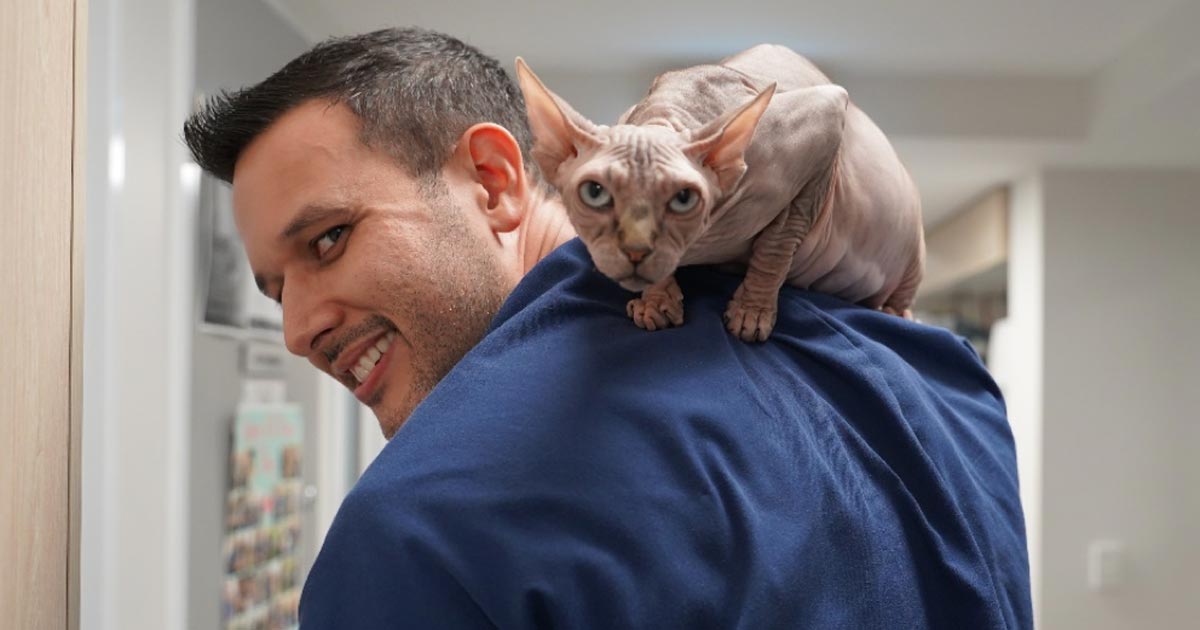A cuddle was not enough for this patient (see top image) – he clearly wanted to use me to get a better vantage point and sharpen his claws at the same time.
It’s a bit hard to develop a mutually agreed agenda with a cat, but have you ever stopped to consider whether, as a veterinarian, you do that for your clients?
Making an ass of u and me
We assume our clients know what’s going to happen, right?
We start with a history, then a physical examination, then develop a plan, and so on – but this assumption is frequently incorrect, and our clients often don’t know what’s going to happen.
Communicating the agenda is a powerful tool in letting pet owners know what is going to happen next – and when it is delivered in an appropriate way, it allows them to have a say in the plan.
Is it okay?
So, how do we develop a mutually agreed plan? We communicate it and ask if it is okay.
For example, “Is it okay if we talk for a couple of minutes first about what has happened then we will have a look over Fluffy?”, as they could be thinking “Why are we talking and not looking at my sick pet?”.
Another example is when you want to do a full examination first before looking at the sore leg. Some clients may be thinking “why is the vet looking at his mouth, it is back left leg!” – ask: “Is it okay if I check Fluffy over first and then I will look at her sore leg at the end? I just want to make sure everything else is okay.”
Explaining the next steps
When you communicate the agenda, you are informing the clients what is going to happen next. This reduces uncertainty and feelings of anxiety; and helps build trust and rapport as you are being clear, open and honest, and you are inviting them to have input.
This is one important tip for building a partnership with your clients in the consult room, but is also applicable to all staff members and their interactions with clients.

Leave a Reply